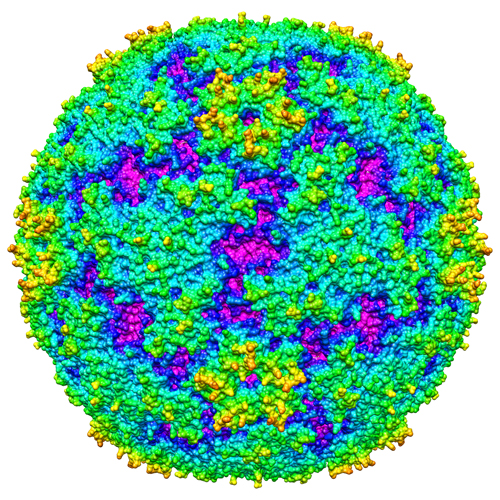Studies reveal structure of EV71, a virus causing childhood illnesses
03-25-2012

WEST LAFAYETTE, Ind. - Researchers have discovered critical new details about the structure of a virus that causes potentially fatal brain swelling and paralysis in children, pointing toward designs for antiviral drugs to treat the disease.
The virus, called enterovirus 71, causes hand, foot and mouth disease, and is common throughout the world. Although that disease usually is not fatal, the virus has been reported to cause encephalitis, a potentially fatal illness found primarily in the Asia-Pacific region.
Now, two research teams are reporting new findings about the structure of the virus. One of the teams, from Purdue University, has proposed a way to design antiviral drugs to treat the infection. Findings from that team are detailed in a paper appearing Thursday (March 1) in the online Express issue of the journal Science. Another team, led by researchers at Oxford University, will report its findings in a paper scheduled to appear Sunday (March 4) in the journal Nature Structural & Molecular Biology.
"Taken together, the findings in both papers are useful when you are trying to stop the virus from infecting host cells," said Michael G. Rossmann, Purdue's Hanley Distinguished Professor of Biological Sciences. "The common theme is that they both report for the first time on the structure of this virus, and this tells us how to design compounds to fight the infection."
Rossmann is co-author of a paper written by Purdue postdoctoral research associate Pavel Plevka; Purdue research scientist Rushika Perera; Richard J. Kuhn, a professor and head of Purdue's Department of Biological Sciences; and Jane Cardosa, a researcher at Sentinext Therapeutics in Malaysia. Read more here.